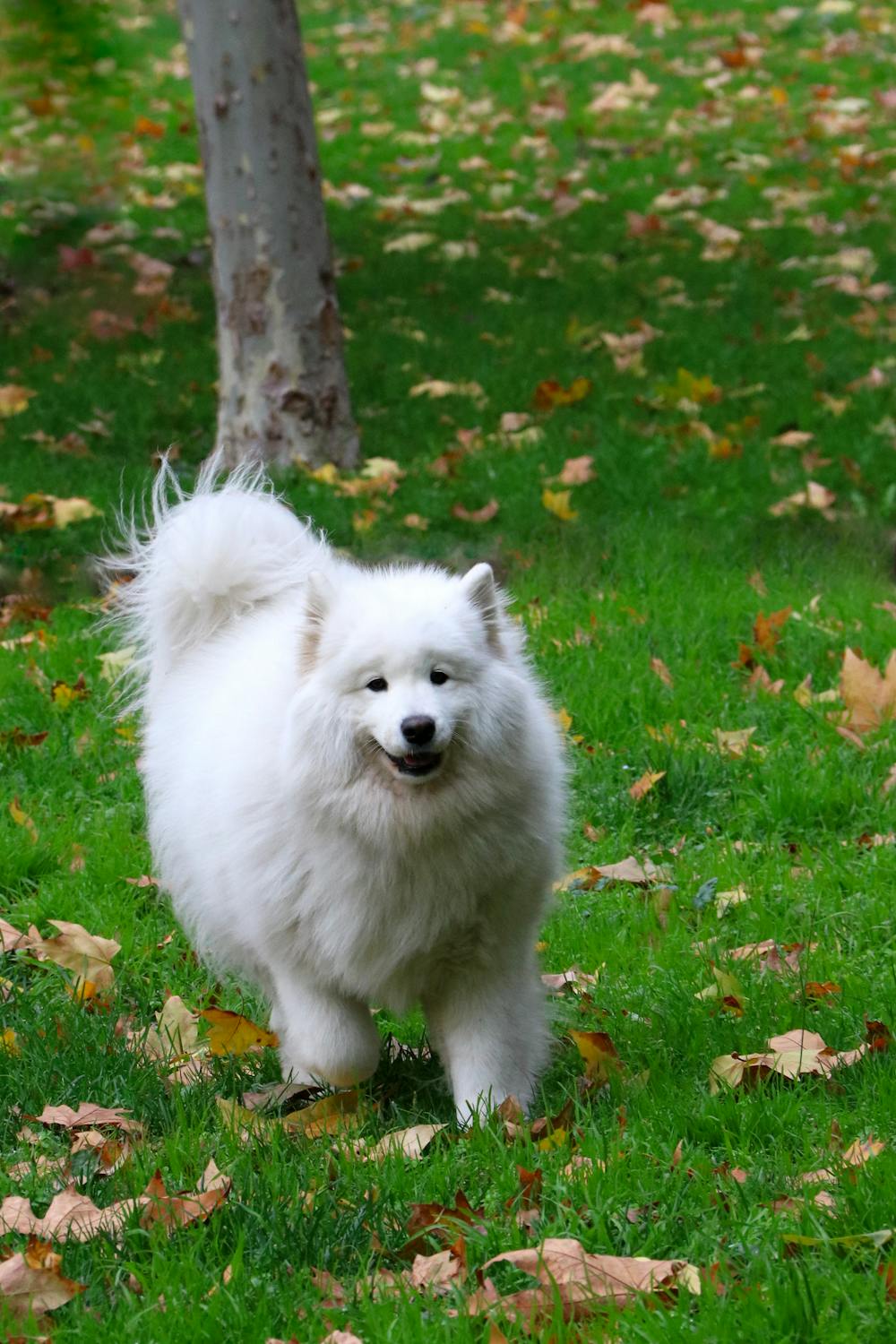

The Japanese Spitz was developed in Japan in the 1920s and 1930s from several small white Spitz-type breeds. Bred originally as companions, the dogs are friendly and can be taken in a family with kids. They are quite tolerant towards other pets, but playful temperament sometimes may lead to chasing smaller animals. They have soft plushy white skin, double-coated, and have rather a fox-face appearance, which only adds to the charm.
Breed Group
Life Span
Size
Exercise
Coat Type
Grooming
Having a friendly and lively disposition, Japanese Spitz serve as faithful companions to families. The Japanese Spitz is an extremely wonderful, friendly, sociable companion dog, with a second nature of following its owner and human interaction. They are intelligent and learn quickly and even though training does not turn into a huge ordeal. The dog can develop stubbornness without proper guidance. Friendly and good with children, the Japanese Spitz tends to be quite protective of its family. They are full of energy and need regular exercise or play to release some of this energy. They are very alert, and they will bark to communicate or as a warning sign to alert strangers approaching. Japanese Spitz are social dogs that thrive in an apartment setting as long as their exercise needs are met. They also do not do well when left alone for an extended period of time. Eager to please, the breed is determined, witty, adorable, charming, and subconsciously funny. All in all, the Japanese Spitz belongs to a versatile breed that is caring and intelligent and is usually suitable for agile family environments.
Japanese Spitz are intelligent dogs. They need about an hour of exercise each day and thrive when this is paired with apt mental stimulation. They are eager and easy to train, especially if used with positive reinforcement methods. Socialization training should start as early as possible. They need to learn to respond well to their owners when they call, for their safety when outdoors is concerned. They should be trained right away from puppy-hood or at the time they come to their new homes to ensure all good behavior. Motivation comes from rewarding good behavior with treats, praise, or playtime. Keep training sessions short, around 10-15 minutes, to keep their attention. Regardless, a moderate amount of exercise is necessary; for instance, walks and playtime in a fenced area or games to stimulate both mind and body.
While the Japanese Spitz is basically of good health and the general danger of facing some illnesses gets the pedigree taken care of, it is bound to serious ailment - like any other dogs. Patellar Luxation: Abnormal sliding of the kneecap from its normal position can cause pain and discomfort while moving. Weight management and joint supplements are to control its development; however, in pretty severe manifestations, surgery is considered. PRA: This is a genetically passed-on degenerative eye condition which slowly leads to blindness. There is no cure for it presently. Checking with a veterinarian regularly should keep a check on ocular health prevention; testings shall be conducted to identify carriers before breeding. Dental diseases: This is the worst when he is a candidate with such a tiny mouth. Their teeth require to be brushed regularly, and regular visits to the dog's dentist would at least prevent the buildup of tartar, leading to gingivitis; hence life will be spared any further serious extensions of their troubles. Muscular Dystrophy: A rare genetic disorder, the normal functioning of inner body muscles is always impaired. It is often manifested around ten weeks of indicators for a puppy. Proper breeding practices serve to minimize the risks of Muscular Dystrophy through routine DNA tests. Factor VII Deficiency: A hereditary disorder that causes deficits in blood clotting. Manifestation of symptoms does not come forth until after injury occurs. Genetic testing of the parents might allow them to see which puppies are afflicted, which would help the owners lessen the huge risk of finding out.
Japanese Spitz have a fluffy, thick, and double coat with pure white color, making it love to be groomed time and again. The coat has a unique texture that helps in repelling dirt, so it is a relatively low-maintenance breed compared to the other breeds. Moderate amounts of hair can be found around the house at all times, with heavy shedding during the change of seasons. The coat must be brushed once a week and daily during shedding seasons in order to prevent the formation of matting and take care of any loose fur. A Japanese Spitz has a clean coat. The frequency of their baths is up to the owner but it is best to bathe them every few months or when absolutely necessary. Many owners suggest using a gentle dog shampoo to ensure no irritation to the skin occurs. Regular checks must be done on the ears for wax buildup and hence cleaned gently when necessary. Check for any discharge or tear staining on their eyes. Pet parents should also check their Japanese Spitz for parasites, lumps, and bumps on a routine basis.
Japanese Spitz require a heightened level of dietary intake for their good health and well-being. They require high-quality diets with a great source of meat proteins, chicken, beef, and fish. It's good to contact the vet about what foods would be good for their ages, health, and activity. Feed puppies 3-4 times daily until 12 months. High-quality puppy food is recommended. Serve two times daily, approximately 0.5 to 1 cup for each serving. Most of them need 1-2 cups of food daily divided into 2 separate feedings. The foods that the owners choose for the Spitz should conform to the AAFCO recommendations for small-sized breeds. You should monitor their weight to prevent obesity from setting in, which could lead to other health hazards. Give them access to fresh water at all times.